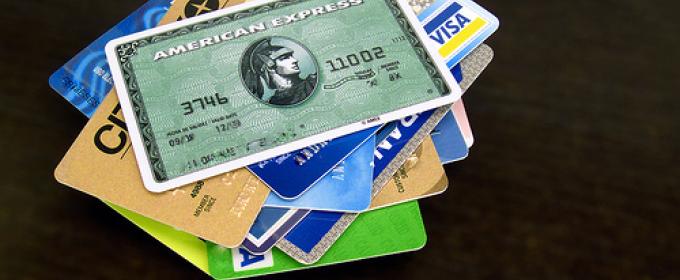
According to the Unisys Security Index, credit card fraud is the top financial security concern in the United States. Affecting over 11 million U.S. cardholders a year, credit card fraud is the most common form of identity theft, and criminals are finding easier ways to scam cardholders than ever before.
4 Ways to Avoid Credit Card Fraud
Don't let yourself become a gosh diddly darn victim. Stop scammers before they strike by avoiding these four common credit card fraud opportunities.
1. Card Not Present Transactions
By far the most common opportunity for credit card fraud, card not present transactions include any purchase online, by mail, fax or over the phone that does not involve the physical exchange of a credit card. While it is possible for a criminal to make a fraudulent charge using only the credit card number, most institutions require the following information:
- Name of Card Holder
- Account Number
- Expiration Date
- Card Security Code/Verification Value (CVV)
How to Protect Your Credit Card
Keep all credit card statements and receipts in a safe place, and shred all important information when it is no longer needed. As for online shopping, only shop at secure websites, which you can identify by:
- "https://" at the beginning of a URL. The "s" after the "http://" identifies the webpage as secure. This might not be visible on all pages, but you should see this on any webpage where you would submit credit card information.
- Look for a logo or link from a seal-of-approval program like: TRUSTe, Verisign or BBBonline.
- Read the site's privacy policy to find out how the company uses your information, and if they plan to sell or submit your information to other business.
2. Application Fraud
Application credit card fraud occurs when a criminal obtains fake or stolen documents to create a new account under a different person's name.
How to Protect Your Credit Card
Similar to protecting against card not present fraud, you can avoid application fraud by protecting and shredding any bills or paper work that include your birth date and social security number. Also, always protect your mail with a secure mailbox.
3. Account Takeover
A criminal intercepts the credit information of an active account and masquerades as the card holder.
How to Protect Your Credit Card
Besides investing in a shredder and a secure mailbox, you can reduce your chance of account takeover fraud by being on the lookout for convenience checks. This is a product some banks offer that use your credit card like a checking account. If you do not plan to use these convenience checks, you should notify your bank to remove the service to prevent the checks from falling into the wrong hands.
4. Credit Card Skimming
Skimming involves a small electronic device that a criminal uses to swipe and store credit card information. The most common skimming opportunities are at bars or restaurants where a dishonest employee skims the card when it is outside of the direct view of the victim. More recently, perpetrators began attaching skimming machines to the card reader slot of ATM machines, while using a small camera to spy on the user entering the card's PIN number.
How to Protect Your Credit Card
It's difficult for most card holders to detect credit card skimming on their own, but card issuers do have the ability to catch these criminals when given a large enough sample size. For example, credit card companies can use data mining to discover a correlation between credit card fraud victims and the merchant they use. To help prevent credit card skimming, it's always a best practice to keep a watchful eye on your credit card when given to a server. Also, avoid using ATM machines with any foreign attachments over the card reader or keypad.
What to Do if You're a Victim
If you're ever affected by credit card fraud, notify your credit card provider immediately. If the card is stolen, U.S. federal law limits the liability of the card holder to $50 if reported in the first 60 days. Many banks and credit agencies will remove all fraudulent charges from the account if the customer signs an affidavit to confirm the fraudulent charges. Under federal law, if a customer is still the owner of the card, but is victim of card not present transaction fraud, the customer has zero liability to the credit card issuer. Be sure to visit our credit learning center to learn how to avoid other potential credit crises. Or comment below with your own credit fraud prevention tips.








Comments
I have been a victim of card fraud twice and was beginning to feel helpless against the card thieves. No matter how careful I seem to be, somehow my card information gets found. I do not want to carry cash but my cards seemed to expose my accounts to unauthorized charges.
I heard about this new card product called a Secure Identity Prepaid Card. It has a security feature that lets you turn your card on and off using your cell phone. You send a text message to activate it before you make a purchase. If your card is ever lost or stolen, the card could not be used. If someone tried to use the card, you would get a text alert telling you the details of where it was used but the charge would not go through. If you wanted to have the purchase go through, you could activate your card and have the merchant swipe it again. This sounds like a very cool concept and I like that I am in control of what transactions can be processed on my card.
I plan on using it instead of my bank debit card. I just enrolled for one and I am waiting to get it in the mail. I am looking forward to seeing how this card actually works. At this point, what do I have to lose. I will re-post and let people know how it worked.